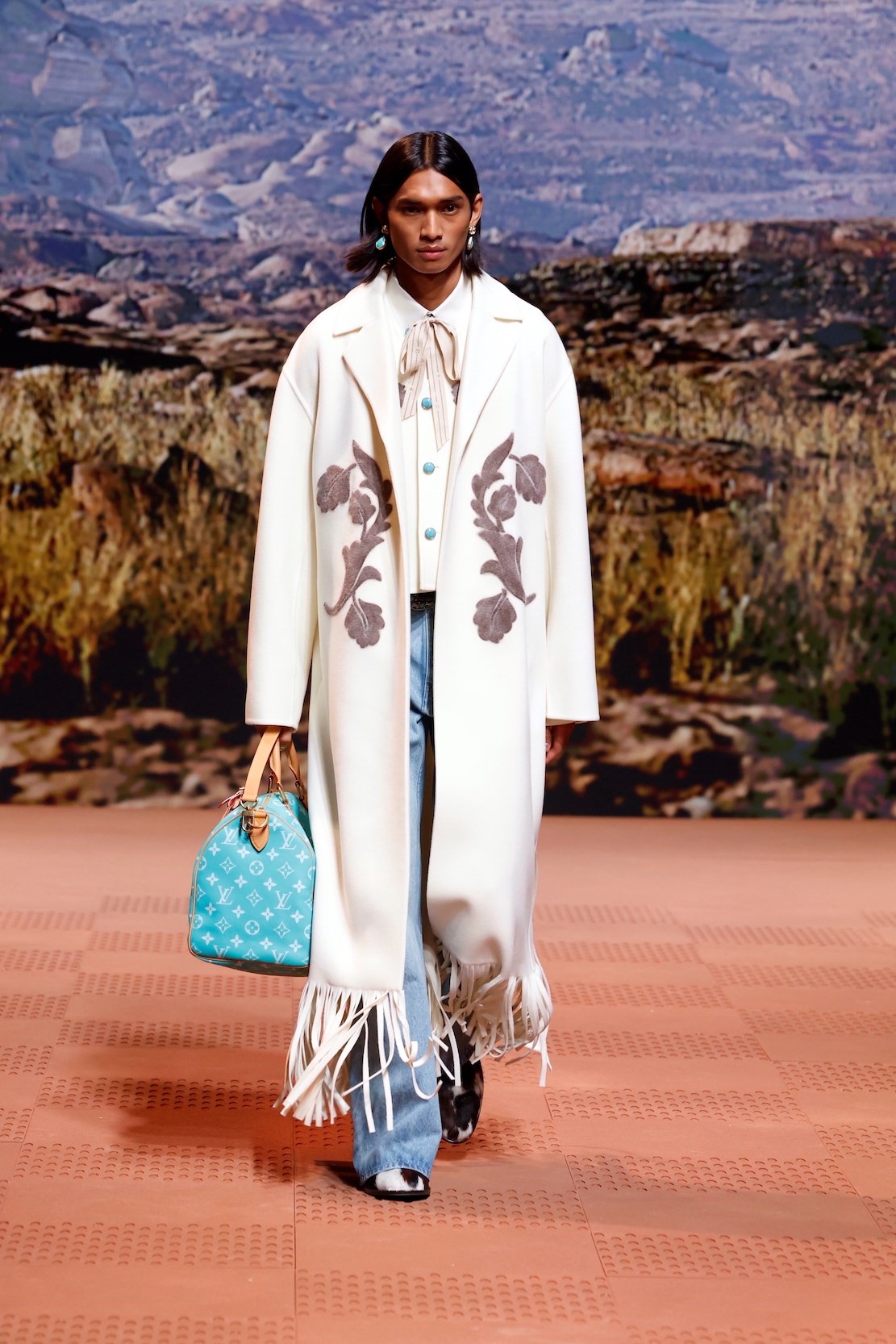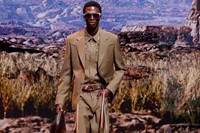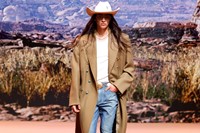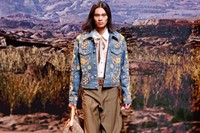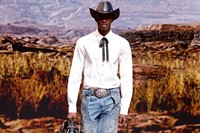So, by 2024, we all know Louis Vuitton is all about travel. It even recently rebranded its interim shows – the cruise and pre-fall ones that fashion uses as a great excuse to globe-trot to entertain various markets – as its “Voyager” shows, based around that selfsame notion. So, for his Autumn/Winter 2024 menswear collection, Pharrell Williams decided to journey way out West, to America. “LVirginia” was the branding – which technically is East Coast, but is Williams’ birthplace, reconstituted here in Louis Vuitton’s. And there were – and are – cowboys in Virginia, which was the show’s recurrent leitmotif.
Cowboys lead, maybe naturally, to Native Americans. But Williams’ intention was “appreciation, not appropriation”, as he stated backstage. And thus the collection was not only based around creative exchanges with peoples of the Dakota and Lakota Native American tribes, but the staging and sound of it too. Traditional motifs and symbols were embroidered and painted across bangs and printed and woven into scarves and blankets, created with craftspeople of these Sioux nations. They also collaborated on the staging and soundtrack of the show, a 360-degree approach to ensure those marginalised voices were properly resonant.
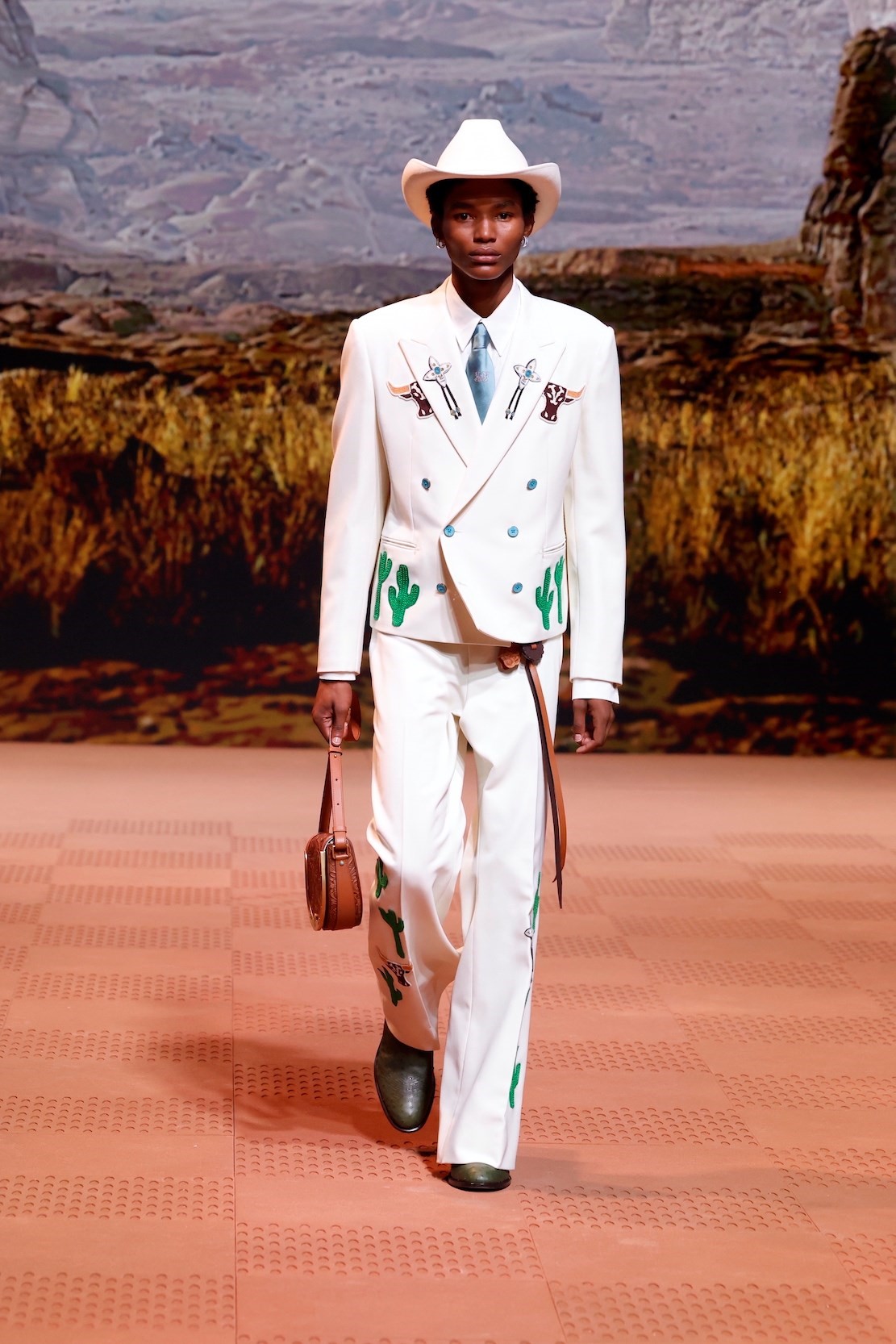
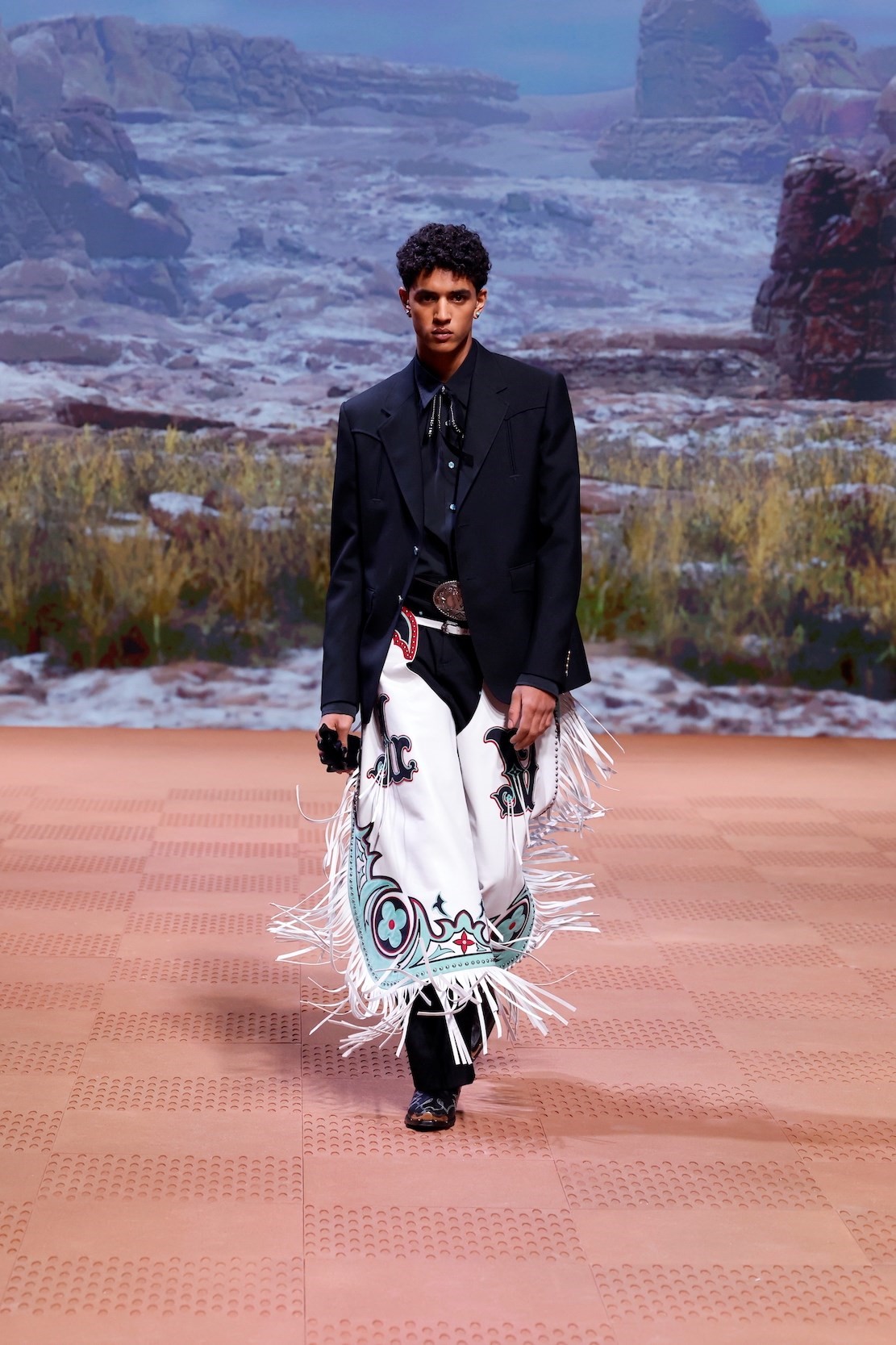
The craft may have come from the New World, but the link to Louis Vuitton was indelible – and not only via the trunk-toting models wheeling luggage around the looping catwalk. There was superlative leather-work, saddle-inspired carved leathers, appliqués and embroideries like Western boots, connecting artisans across geographic and cultural divides. And the notion of American luxury was also knotted up in the idea of a collaboration with Timberland, the New Hampshire-based workwear boot company, the most Vuitton-ised iteration of which featured eyelets and tongue pendants in genuine gold. That idea – of genuineness, of realness – permeated the whole collection, lavishly studded with turquoise and pulling in those authentic First Nations crafts and motifs. It was also knotted up in the idea of the cowboy not purely as a working figure, but as a prairie dandy studded with gems and gussied up in finery. That also connects with famous figures of American culture – there was more than a whiff of the embroidered suits whipped up by Nudie Cohn, the rodeo tailor who dressed everyone from Elvis down in a who’s who of flamboyant country rock couture.
Of course, it’s a somewhat unconventional interpretation of craft for a French fashion house, which often barricades itself into cul-de-sacs of ‘savoir-faire’ comprising age-old (and, sometimes old age) techniques drawn from couture’s storied past. The difference here was Williams’ American slant on the notion of preciosity – and, of course, his cultural viewpoint. Not only on French culture, but his own. “When you see cowboys portrayed you see only a few versions, you never really get to see what the original cowboys really looked like. They looked like me – they were Black, and Native American,” Williams said. That was the story he sought to tell – and he used the perhaps unparalleled reach of the Louis Vuitton brand to do it. In short, when it comes to travel through these shows, Williams isn’t just trying to show us different places and spaces, but rather to broaden our ideological horizons as a whole. It’s a bold, and brave aim.
